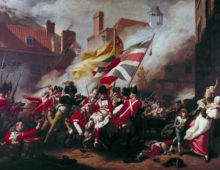Tagged with Images
Resource : The life and adventures of Michael Armstrong, the factory boy by Frances Trollope
This illustrated novel by Frances Trollope (1779-1863) was published in monthly parts in 1840, costing one shilling apiece. It tells a fictional story of Michael Armstrong, based on the real-life hardships, exploitation and suffering of children in the workplaces of the Industrial Revolution. It was the first novel about industrial life in Britain and made an important contribution to the campaign to reform conditions for workers – especially children.
Resource : Frontispiece to Frankenstein or the Modern Prometheus by Mary Shelley
Mary Shelley was one of a number of celebrated female writers of the early 1800s, which included Jane Austen, Charlotte, Emily and Anne Bronte, and Elizabeth Barrett Browning. These writers marked a revolution in the publication and popularity of works by female authors – many of whom initially published their work anonymously or under a male pseudonym. Their writings became a powerful tool for women to make their voices heard outside of the home, take control of their lives and reflect on the position of women in society.
Resource : Toussaint Louverture, Chief of the French Rebels in St Domingo
Toussaint Louverture (1743 – 1803) was born into slavery in St Domingue (now Haïti) on the Caribbean island of Hispaniola. In 1791 he led the first – and only – successful uprising of enslaved Africans. Although he died before the revolution spawned a nation, in 1804 Haiti became the first independent ‘black’ republic and contributed to the decline of the transatlantic slave trade. The events in St Domingue became known as the Haitian Revolution. This and other depictions of Louverture (in print and portraiture) reflected the high levels of fascination and respect expressed around the world for a radical figure who had refused to yield and who surmounted all foes in the revolutionary contests.


